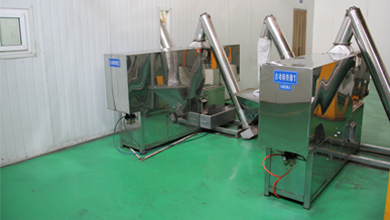Des . 16, 2024 14:57 Back to list
china making chili flakes
The Art of Making Chili Flakes in China
Chili flakes, known for adding heat and flavor to various dishes, have become a staple in many kitchens around the world. In China, the process of making chili flakes is both an art and a culinary tradition, deeply rooted in the country’s rich history of spice cultivation and usage.
The Cultivation of Chili Peppers
China is one of the largest producers of chili peppers globally. The ideal climate and fertile soil in regions like Sichuan and Hunan make them perfect for cultivating aromatic and spicy varieties. Farmers carefully select the types of peppers to grow, often choosing local favorites like the Facing Heaven (Tianjiao) pepper, known for its heat and unique flavor profile.
The cultivation of chili peppers begins with the selection of high-quality seeds, taking into account factors such as climate and soil conditions. Farmers prepare the land meticulously, ensuring that the soil is rich in organic matter to support healthy plant growth. The peppers are harvested once they reach maturity—characterized by their vibrant colors and pungent aroma. Harvesting is done by hand to avoid damaging the delicate fruits, and this labor-intensive process reflects the care and dedication that go into producing high-quality chilies.
Drying Process
Once harvested, the next step in making chili flakes involves drying the peppers. In China, this is often done using traditional methods. The peppers are spread out under the sun on bamboo mats or hung in clusters to dry naturally. This method imparts a distinct flavor to the peppers that is highly valued in Chinese cuisine. The drying process can take several days, depending on the weather and humidity levels. The goal is to reduce the moisture content while preserving the vibrant color and essential oils of the peppers.
In modern practices, some producers opt for dehydrators to speed up the process while ensuring consistency. However, the traditional sun-drying method remains popular among artisanal producers who believe it enhances the final product's flavor profile.
china making chili flakes

Grinding into Flakes
After the chilies are thoroughly dried, they are ready to be ground into flakes. This process can be done using traditional grinding tools, such as a mortar and pestle, or with modern electric grinders. The choice of method often reflects the producer's philosophy towards food—those who lean toward tradition often prefer the mortar and pestle, which they believe retains the integrity of the spice better.
During grinding, the dried chilies are often mixed with some seeds or skins to create a more textured and flavorful flake. The final product is vibrant red, with a robust aroma that can elevate any dish, from stir-fries to soups.
Usage in Chinese Cuisine
Chili flakes play a crucial role in various regional cuisines across China. In Sichuan cuisine, they are often combined with peppercorns to produce the iconic 'mala' flavor—a numbing spiciness that characterizes many dishes. Chili flakes are used in sauces, marinades, and dips, adding both heat and depth to the flavors.
In addition to their culinary uses, chili flakes are also believed to have several health benefits in traditional Chinese medicine, including boosting metabolism and improving digestion. Thus, they not only enhance flavor but also contribute to overall well-being.
Conclusion
The process of making chili flakes in China embodies centuries of agricultural knowledge and culinary heritage. From careful cultivation and drying to the precise grinding methods, each step reflects an appreciation for the chili pepper's unique qualities. With their intense flavor and vibrant color, chili flakes continue to spice up dishes not just in China, but around the world, showcasing the universal love for this fiery ingredient. Whether in a simple home-cooked meal or a gourmet dish, chili flakes illustrate how something humble can transform culinary experiences, bringing warmth and joy to the table.

